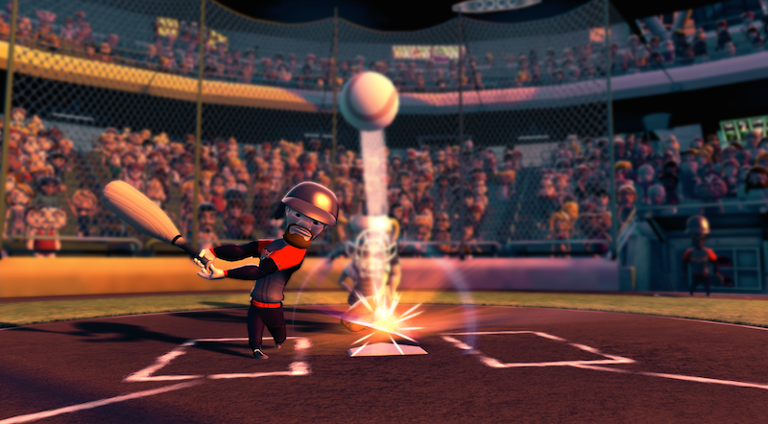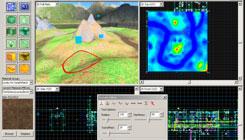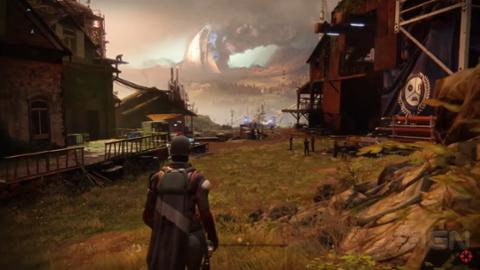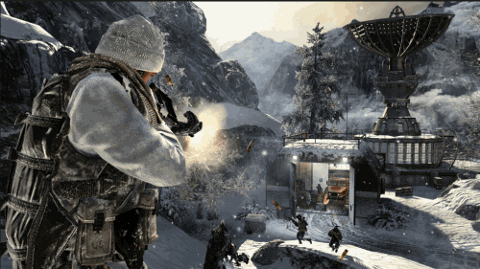There’s probably never been a better time to be an independent video game developer. Cheap access to advanced game development software and self-publishing options help today’s small studios make great-looking games and deliver them to gamers’ living rooms. But that doesn’t mean it’s easy for indies to compete against the biggest development companies, especially in certain genres dominated by so-called "AAA studios." Pity the small studio that makes a sports game, a genre in which the biggest companies pay giant licensing fees for the right to simulate the most famous athletes on Earth, and use motion capture technology to recreate their movements. Small studios making first-person shooters or massively multiplayer online RPGs also face stiff competition in genres where huge development and marketing budgets rule the day. Story-driven action-adventure games are giant projects too, complete with famous actors to voice characters. If you have a small budget and only a few developers, making a simple platform game might be the most prudent course. But that doesn’t mean indie developers can’t swing for the fences and win. We interviewed developers from two small studios who took on some of the toughest genres—sports simulations and first-person shooters—to find out the secrets of their success.
Making a Winning Sports Game
Super Mega Baseball is an indie hit from Canadian studio Metalhead Software, appearing on the PlayStation 3 and 4, Xbox One, and Windows. Hard-core fans of baseball video games generally gravitate to Sony’s MLB: The Show series, with its realistic depictions of real-life athletes. Yet Metalhead found success with a cartoony take on the genre. “We set out from the beginning to make something that complements the big sports [franchises] more than directly competes against them,” Metalhead co-founder Christian Zuger said. Super Mega Baseball is easier for casual gamers to learn and play than MLB: The Show, and that’s one reason for its strong sales and critical acclaim. But that doesn’t mean making the game was easy. Even when you’re creating cartoony baseball players, they still have to move like real athletes. They need to look somewhat natural when they swing the bat and throw the ball, and have enough artificial intelligence to perform the actions humans perform in baseball games. There are a lot of complex physics simulations needed “just to get it to look like baseball, let alone have it actually be fun,” Metalhead co-founder Scott Drader said. Besides the athletes, rendering a crowd is also difficult from a technical standpoint. “There’s a reason a lot of indie games are 2-D and stick to 2-D animation,” Drader added. “As soon as you're working with 3-D characters, and especially the dynamic animations needed in sports games, you automatically need this pretty comprehensive art pipeline” and many months of work. “I can see why indies haven't jumped into team sports too often.” The development cycle for Super Mega Baseball lasted about four years. Initially, Drader and Zuger were developing the game on the side as they worked other software development jobs. Later, they borrowed money and made Super Mega Baseball their primary focus. Over about eight months last year, they were working 16- to 18-hour days, seven days a week, to go from a prototype to a finished product. The studio now has five full-timers and a few contractors. The huge amount of work paid off in part because there aren’t many other indie sports games. “With platformers, there are so many of them out there it’s tough to break out and have one that stands out from the crowd,” Drader said. With sports, there are annual big-budget titles representing each of the major sports leagues, but there was room for something different. “We saw a lot of enthusiasm on the basis that we were providing something that wasn't prevalent at the time,” Drader said. “There’s a heck of a lot of different ways to represent a sport… There's only one or two major titles in each sport but it just doesn't need to be that way.” Drader and Zuger are still considering what kind of game they will make as a follow-up to Super Mega Baseball. The decision will depend partly on budget, of course. The Metalhead team is thrifty, relying mainly on free software such as PhyreEngine, the Bullet Physics Library, and CEGUI, and custom tools they built themselves. Certain characteristics that are par for the course in big studio games are hard to implement for small teams, Drader noted. Any 3-D action-adventure game in which a player traverses a large world is “very demanding in terms of art production,” he said. MMORPGs have the added complication of an online, persistent world for multiplayer action, he noted. If money were no object, Drader and Zuger would consider making games far different from Super Mega Baseball. “I have always been a huge fan of RTSes [real-time strategy games], I adore anything Blizzard makes,” Zuger said. “What I would love to do is Something like Warcraft or StarCraft. Those have always been my favorite types, but again those are very big-budget titles. The barrier of entry for an RTS is massive.” Drader said he’d love to make a first-person shooter or an action-adventure game similar to Dishonored or Uncharted. “But to make something that’s going to stand out there, you're into AAA budgets,” he said.
Making a First-Class First-Person Shooter
The most popular first-person shooters are generally made by big studios and boast some of the most advanced graphics of any genre. But if you want a professional-looking FPS from an indie studio, look no further than Dead Effect and the upcoming Dead Effect 2 from BadFly Interactive. Using horror and science fiction themes, Dead Effect was released on iOS and Android in late 2013 and on Windows PCs and Macs in late 2014. The game is free with in-app purchases on mobile devices, and costs $4.99 on Steam. It’s gotten about 8 million downloads across all platforms. BadFly CEO and co-founder Lubomír Dykast knew it would be a challenge to break into the genre. “When people hear ‘indie developers,’ they usually imagine very niche games with unusual themes, so succeeding with a traditional sci-fi shooter is not that easy,” he said. Dykast and his fellow developers had experience at major studios, but he described the team that made Dead Effect as a “basement operation” consisting of just five people. BadFly made the game with Unity3D, a popular game engine among indie developers, and Dykast said that “thanks to all the talented people we have, I can honestly say that you can make an AAA game without the AAA budget.” But having an indie budget poses limits that big studios don’t face. Initially, BadFly developers wanted to add a multiplayer mode, but “we found out that due to the technology we used in development, it was nearly impossible to add it to the game—we would basically have to recreate it from scratch,” Dykast said. BadFly had promised to deploy multiplayer when their game was previewed on Steam Greenlight, which lets players vote on which games should be released on Steam. BadFly developers reluctantly decided to scrap the multiplayer mode in the first Dead Effect and save it for the sequel. “Unfortunately, some of our fans couldn’t stomach this decision and we’ve been repeatedly accused of scamming the players,” Dykast said. “That is another challenge that comes with the territory—you might be an indie studio, but when you want to make AAA stuff, nobody cares that you don’t have time or money or staff to do this and that. People want AAA services. That was a big lesson for us.” Dead Effect 2—with multiplayer action—is now on course for an October 22 release. Dykast is committed to first-person shooters, his favorite genre, and he’s hoping to grow the studio’s budget to tackle ever-bigger projects. “I hope that our next project will be a complex, full-blown sci-fi game with a strong story arc,” he said. “Dead Effect 2 is a kind of a vanguard and I hope that the game will be successful enough to give us the freedom to work on our dreams and bring our fans something even bigger and better.”



